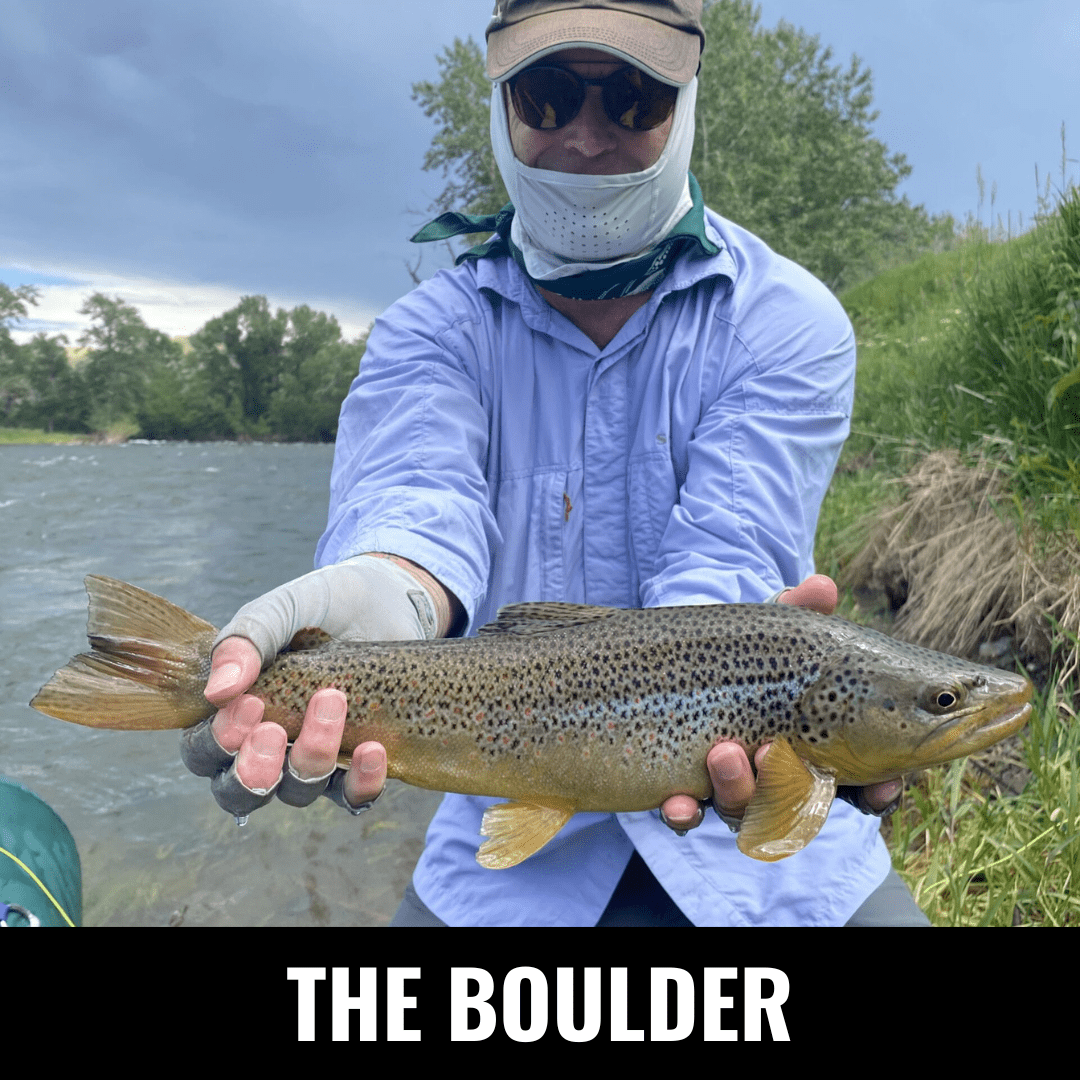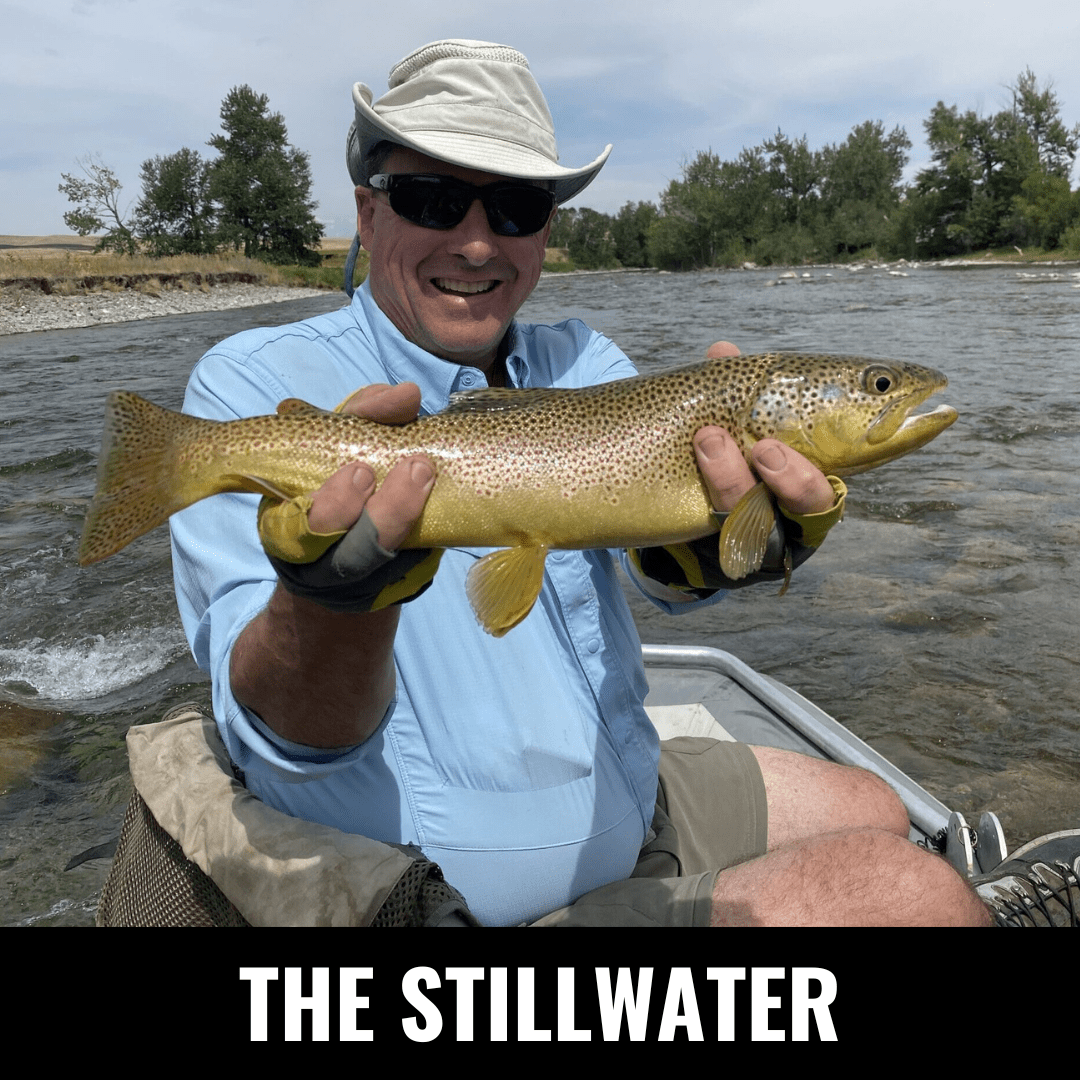Experience the best fly fishing in montana
We have the pleasure of fishing Montana’s premier public and private trout waters – from big drift boat rivers to more intimate smaller raft trips to iconic spring creeks. Southwest Montana has it all. See detailed descriptions of our home waters below.
Yellowstone River
The Yellowstone River is practically an ocean. For over 600 miles, it flows unabated until its union with the Missouri River in western North Dakota. Along its course, it is fueled by many of my favorite tributary fisheries like the Boulder and Stillwater Rivers, as well as a myriad smaller streams and seeps that keep the river cool enough to provide over 200 miles of quality fishing. The lion’s share of the 200 miles is accessible by boat.
Boulder River
Every time I head south in Big Timber, Montana, I am excited. Why? The finest cold-water trout fishery in Montana flows north through Big Timber – the Boulder River. The Boulder flows straight north and drains the highest elevation snowpack in Montana, thus a summer long supply of faultless water. As the river courses through deep granite canyons, it eventually runs into an idyllic, intimate river valley. Here we find a brown trout fishery that at times meanders, and at other times thunders through the innumerable cottonwood trees that line the Boulder River.
The reason for the name becomes obvious upon first glance. Large, round boulders dot the stream bed throughout much of the upper stretch, and as the river hits the Yellowstone River Floodplain, the river spreads and we have some of the premier wade fishing water in Southwest Montana.
Stillwater River
The Stillwater River is where many of us have our first memories of fly fishing, but if that is not your first memory, perhaps reading this will create a first memory for you. My earliest and most fond memories of fishing as a kid are on the Stillwater River. The river’s football sized cobble creates endless riffles along cut banks that are truncated by beautiful pools replete with well-defined drop offs. As a trout angler, there is nothing that suits my eye and screams, ‘fish’ more than the Stillwater River.
Depending on the flows, the Stillwater offers approximately 30 miles of quality fishing from the boat. The lower river is floatable throughout the early spring, summer, and late fall. Each stretch provides its own individual beauty as the river rolls through cottonwood groves and lush range land.
DePuy’s Spring Creek
DePuy’s is the kingpin of the Paradise Valley Spring Creeks. Over it’s 3-mile course, anglers can find every fishy structure known to man. The structure includes slicked out grass flats, cut bank, riffles, runs, AND buckets. With a constant flow of limestone enriched water, this is truly an exemplary environment for trout. The fish closely resemble their environment, with clean sides, big shoulders, and vibrant colors, arguably some of the most beautiful trout one can encounter in Montana.
DePuy’s provides excellent fishing opportunities on both sides of the water. For anglers seeking to get it done with only a dry fly, some days are better than others, but with commitment, success can be found nearly every day of the season.
Armstrong’s Spring Creek
Armstrong’s Spring Creek is the parental source of DePuy’s Spring Creek. While the two creeks share water, and fish they present themselves in two completely different ways. When an angler compares the two, they maybe resemble distant cousins, rather than twins. Armstrong’s Spring Creek is the consulate spring creek. At a little over one and a half miles, with more big flats than notable riffles it is a dry fly paradise. Not only do we see the dimpled waves of a nice trout sipping PMDs, but we also see the trout holding in the current!
The creek winds its way from the source through the riparian zone on a sprawling, working cattle ranch. Fish seem to defuse evenly across the broad flats and present themselves as clear targets. Precise casting is always a necessity when fishing Armstrong’s. The fish that inhabit Armstrong’s are truly substantial spring creek fish and boast length and girth, with phDs in Bug Eating!
Missouri River
The Missouri River is a trout factory. It originates at the confluence of three renowned trout rivers: The Madison, Gallatin, and Jefferson, that all converge at nearly a singular point. The famed section of the Mo’ begins at Holter Dam. From the dam the water flows east and provides over 30 miles of high-quality trout fishing as the river meanders east through Cascade.
The Missouri River provides twelve months of angling opportunity, including some of the finest small bug dry fly fishing in the West and epic days of nymph fishing.
Madison River
The storied Madison River is steeped in fly fishing lore. With a nickname like the “50-mile riffle” it must be a worthwhile fishery.
Indeed, it is. The Madison River can produce some exceptional angling days. Particularly if you like to wade fish. The Madison River originates within the confines of Yellowstone National Park where the Fire Hole and Gibbon Rivers meet. While there are great angling opportunities along its 130 mile length, the area that provides the most consistent angling opportunities is the section between Ennis Lake and Quake Lake – “the Upper.”
Oh yeah… Did we forget to mention SALMON FLIES?!
Bighorn River
The Bighorn River presents itself as a stunning trout river, replete with all the features of any great trout stream. While it has undergone some tumultuous years with low fish counts, the river has begun recovery and is capable of producing the days we all grew accustomed to in previous years.
The Bighorn provides 12 months of quality fishing and sees some of the best spring weather in Montana. Yellowtails Dam creates a tremendously deep (400 feet of water) impoundment of the Big Horn providing exceptionally cold flows throughout the fishing season. The river provides 13 miles of quality trout fishing, with the lower reaches offering some unique hatches and good terrestrial and streamer fishing.








